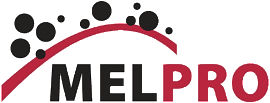HYDROSTABLE METAL-ORGANIC FRAMEWORK LAYER ON ULTRAFILTRATION MEMBRANES FOR EFFICIENT SEPARATIONS: SYNTHESIS PRINCIPLES AND TREATMENT OF OILFIELD PRODUCED WATER
Metal organic framework (MOF) nanoparticles are promising functional materials for modifications of water treatment membranes. However, their limited stability as a separating layer and leaching out during filtration is a major challenge. Recently, we developed a facile route for chemical stabilization of MOF layer on membranes using redox-grafted zwitterionic methacrylate hydrogel1. Microscopic and spectroscopic techniques confirmed the structure and stability of the ZIF-8/methacrylate hydrogel layer. Furthermore, no detectable ZIF-8 particles leached out from the modified membrane during filtration experiments. The hydrostability is achieved via coordination interactions between the negatively charged sulfonate groups of the hydrogel and the positively charged ZIF-8 nanoparticles. Compared to the pristine membrane, the modified membrane showed higher hydrophilicity, lower surface roughness, and its pure water permeance was ~13% higher. Treatment of simulated oilfield produced water by the membranes for three 4-h filtration cycles showed exceptionally high antifouling properties compared to the pristine membrane (flux recovery ratio of 98.5 ± 0.6% vs. 8.1 ± 0.7%) and showed 99.7 ± 0.3% oil rejection efficiency, indicating its outstanding performance for oilfield produced water treatment. Thus, the membrane with a hydrostable ZIF-8 layer holds excellent promise for produced water treatment applications.
